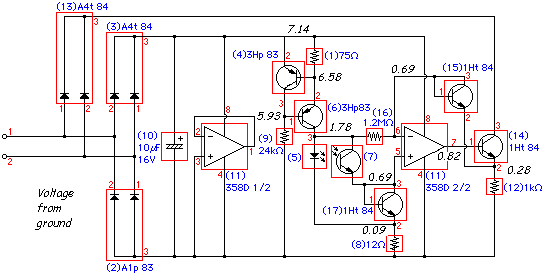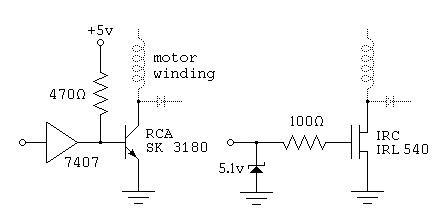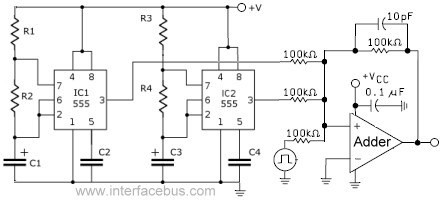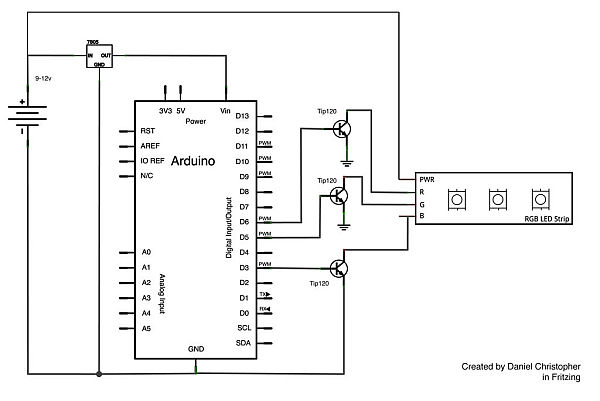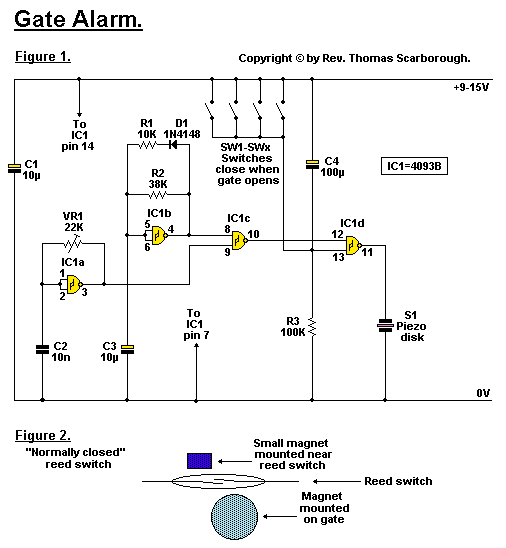
Battery Powered Sine Wave Generator Circuit
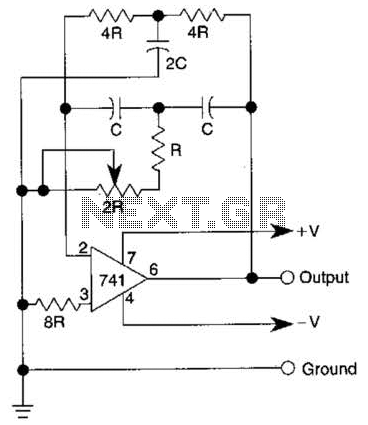
The quality of the sine wave depends on how closely the components in the twin-T network are matched in the operational amplifier's feedback loop.
The twin-T network is a type of filter circuit commonly used in audio applications, signal processing, and waveform generation. It consists of two resistive-capacitive (RC) networks arranged in a T configuration, which allows for the selective attenuation of certain frequencies while passing others. The twin-T network is particularly effective for generating sine waves due to its ability to produce a narrow bandpass response.
In this configuration, the operational amplifier (op-amp) plays a crucial role in determining the overall performance of the sine wave output. The feedback loop of the op-amp is where the twin-T network is integrated, and the quality of the sine wave produced is heavily influenced by the matching of the components within this network.
To achieve a high-quality sine wave, it is essential that the resistors and capacitors used in the twin-T configuration are closely matched in terms of their values. Component tolerances can introduce distortions and affect the frequency response, leading to deviations from the ideal sine wave. Therefore, using precision components with low tolerance values is recommended to ensure that the network maintains its intended characteristics.
The twin-T network typically consists of two resistors and two capacitors, with the output taken from the junction between the two capacitors. The values of these components can be calculated to set the desired frequency of oscillation. The op-amp, configured in an inverting or non-inverting mode, amplifies the signal coming from the twin-T network, ensuring that the output sine wave is of sufficient amplitude for the intended application.
In summary, the quality of the sine wave generated by a twin-T network in an op-amp feedback loop is significantly influenced by the precision matching of its components. Careful selection and calibration of resistors and capacitors are vital for achieving a clean and stable sine wave output, making this configuration a popular choice in various electronic applications. The quality of the sine wave depends on how closely you match the components in the twin-T network in the op amp`s feedback loop.
The twin-T network is a type of filter circuit commonly used in audio applications, signal processing, and waveform generation. It consists of two resistive-capacitive (RC) networks arranged in a T configuration, which allows for the selective attenuation of certain frequencies while passing others. The twin-T network is particularly effective for generating sine waves due to its ability to produce a narrow bandpass response.
In this configuration, the operational amplifier (op-amp) plays a crucial role in determining the overall performance of the sine wave output. The feedback loop of the op-amp is where the twin-T network is integrated, and the quality of the sine wave produced is heavily influenced by the matching of the components within this network.
To achieve a high-quality sine wave, it is essential that the resistors and capacitors used in the twin-T configuration are closely matched in terms of their values. Component tolerances can introduce distortions and affect the frequency response, leading to deviations from the ideal sine wave. Therefore, using precision components with low tolerance values is recommended to ensure that the network maintains its intended characteristics.
The twin-T network typically consists of two resistors and two capacitors, with the output taken from the junction between the two capacitors. The values of these components can be calculated to set the desired frequency of oscillation. The op-amp, configured in an inverting or non-inverting mode, amplifies the signal coming from the twin-T network, ensuring that the output sine wave is of sufficient amplitude for the intended application.
In summary, the quality of the sine wave generated by a twin-T network in an op-amp feedback loop is significantly influenced by the precision matching of its components. Careful selection and calibration of resistors and capacitors are vital for achieving a clean and stable sine wave output, making this configuration a popular choice in various electronic applications. The quality of the sine wave depends on how closely you match the components in the twin-T network in the op amp`s feedback loop.
